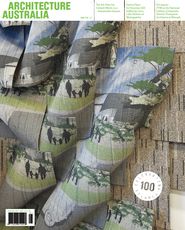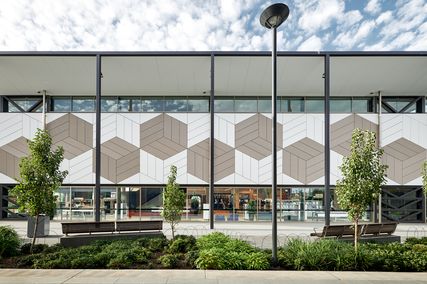In its third year the World Architecture Festival (WAF) felt both familiar and different. Much of the critique and comment that has been offered in the pages of this magazine in the last two years remained apt – the parallel presentations to juries were still patchy, with some juries highly engaged and others far too passive (on my jury it was harder to maintain a sense of energy and momentum this year than in the previous two, so I admit that it is not always easy). And despite being held in Barcelona again (or at least its outskirts) and attracting participants from all over the globe, an oddly English quality still seeped through the whole thing – demonstrating that the organizational structures and modes of hosting have a significant effect on the feel of an event. Indeed, the festival has yet to actually feel festive – a bit more Catalan influence might help here, especially in the catering and in giving delegates a sense that they are actually being hosted.
And yet there is also great opportunity. It is wonderful to be able to see and hear first hand about work from all over the world. The overall award went, unsurprisingly perhaps, to Zaha Hadid Architects’ Maxxi, but there were many other gems to be found as one hopped between parallel sessions on the first two days, and on the third day of category winner presentations to the “super jury”. Highlights for me included An Gaeláras – Cultúrlann Uí Chanáin, an Irish language cultural centre in Derry, by O’Donnell + Tuomey, and the vastly different (and simply vast) Pinnacle @ Duxton in Singapore by ARC Studio Architecture + Urbanism. I am sure most delegates will have found other projects to delight them, both expected and unexpected.
The strength of WAF is the immense national diversity of the delegates, and the opportunity to actively participate in a developing international architectural community. There was a substantial amount of disciplinary familiarity, but also moments of sheer cultural difference, both overt and subtle, that reminded us that we operate in very different environments – physical, political and cultural.
The Australian contribution has shifted and developed over the three years of the festival. The Australian contingent departed the first WAF a little dispirited. Despite Lyons and PHOOEY picking up commendations, there was a sense that Australian work hadn’t really been engaged with in meaningful ways. In the second year some juries had more inane questions, but other projects by Australians fared well, winning their categories. The third WAF saw more Australians win at the category level, and others provide what looked like very stiff competition in their categories. But this time there was also another change. Australia and South-East Asia felt positively buoyant in comparison to the dire economic situations outlined by the English organizers and the Europeans. There was a strong sense that work from this part of the world will come into its own over the next few years, and will demand increasing levels of engagement in forums like WAF.
Because in the end, winning or losing, productive engagement is what it is about. This is why, for me, the highlight of three years of World Architecture Festivals is still the performance of the “super jury” at the first. That jury – Charles Jencks, Cecil Balmond, Richard Burdett and Suha Ozkan, chaired by Robert Stern – looked awfully like an old boys club but, boy, were they good. With an easy rapport and a clear love of architecture and its opportunities, they really, seriously engaged with every project. They questioned, probed and extrapolated, they took projects apart, challenged the architects and speculated on what it might all mean. It was witty, erudite and exhilarating. (The following years’ super juries were dull and overly polite.) WAF, and architecture in general, needs more of the passionate engagement of that first super jury – and surely its not only the province of famous men over a certain age.
Source

Discussion
Published online: 1 Jan 2011
Words:
Justine Clark
Issue
Architecture Australia, January 2011














